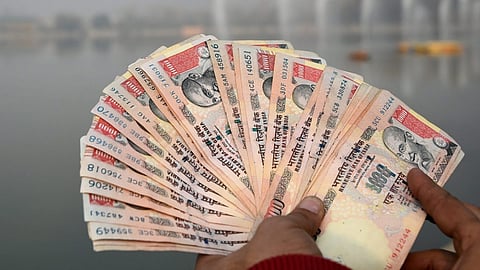

For many Indians, the eve of November 8, 2016, is a day that lives in infamy. It was when Prime Minister Modi, and his government had set into motion a chain of events, whose repercussions would be felt even six years later. On Monday, a five judge Constitution bench of the Supreme Court validated the controversial decision of the Centre to demonetise currency notes of Rs 500 and Rs 1,000 denominations. The apex court rejected the challenge by 58 petitions to the note ban decision-making process, stating that it was flawless.
The Justices remarked that hardships faced by citizens six years ago cannot be a ground to reverse the decision. Having said that, what has rubbed many the wrong way, is how the majority verdict declared that the note ban had a reasonable nexus with its aims — including the elimination of black money and corruption, and that it was irrelevant whether those objectives were achieved or not.
The logic of this remark comes across as particularly obtuse, considering how the government can embark upon an initiative with such wide-ranging implications and not concern itself with an end game. Critics of the reform aimed at offering Indians a long term gain in exchange for a short term pain have some strong numbers to back their argument that this was a myopic decision that was not even indicative of parliamentary participation.
Six years after the move to ban 86% of the currency in circulation, official data shows cash still rules the roost, as the quantum of cash with the public has doubled. The value of currency in circulation stood at Rs 32.4 lakh crore as of Dec 23, 2022, as per RBI. Compare this number to the value of notes in circulation as on Nov 4, 2016, which stood at Rs 17.7 lakh crore. Following the note ban exercise, notes in circulation dipped to about Rs 9 lakh crore. The data further tells us that as compared to Jan 6, 2017, cash in circulation witnessed a greater than threefold jump or a 260% surge while it witnessed an 83% rise as compared to Nov 4, 2016.
If one goes by the argument that the note ban helped weed out black money and terror funding, consider this. The total value of notes returned by the public was Rs 15.3 lakh crore or 99.3% of the total of Rs 15.4 lakh crore crore of notes in circulation on Nov 8, 2016. If almost all notes in circulation came back, where really did all the black money go?
It would be naive to assume that those dealing with black money would park all their funds in cash. Ill-gotten wealth is often routed to real estate projects, businesses, gold, and commercial enterprises. A voice of reason had emerged in Justice BV Nagarathna’s words as she remarked that the exercise should have been implemented through a law of parliament and not through a gazette notification.
One of the plus points of the reform was pushing for cashless payments. But did we need a system shock to stun us into adopting digital payments, even as it forced thousands of MSMEs to shut down? In a cash-centric nation with a high percentage of unbanked individuals, wouldn’t it be more sensible to ensure financial inclusion in a painless manner, while considering the deep chasm that divides those with digital privilege and those without?
Visit news.dtnext.in to explore our interactive epaper!
Download the DT Next app for more exciting features!
Click here for iOS
Click here for Android